Project
AWS commits long-term support for Vietnam’s digital transformation
Published
10 months agoon
Amazon Web Services is launching its AWS Local Zone in Vietnam as part of its long-term investment commitment to the country’s digital transformation.
Eric Yeo, country general manager at AWS Vietnam, emphasised at a media briefing in Hanoi on February 19, “We will continue to support Vietnam’s digital transformation, expand our infrastructure, deepen our investment in skills development, and advance responsible AI adoption. Looking forward to the rest of 2025 and beyond, AWS remains committed to the long-term investment in Vietnam.”
According to Yeo, Vietnam’s digital landscape is evolving rapidly, driven by a remarkable entrepreneurial spirit. What sets Vietnam apart is its strong appetite for innovation, focus on customer experience enhancement, and eagerness to embrace cutting-edge technologies.
 |
| Eric Yeo, country general manager at AWS Vietnam. Photo: AWS |
He elaborated that there are three pillars of AWS support in Vietnam: comprehensive technology solutions, skills development, and infrastructure and partnership investment. The company has a full spectrum of cloud services, customisable GenAI solutions, advanced infrastructure including new Trainium-2 Ultra servers, and the upcoming AWS Local Zone in Vietnam.
AWS Local Zone is infrastructure deployment that brings AWS compute, storage, databases, and other services at the edge of the cloud closer to major residential, industrial, and IT centres, enabling customers to bring applications that require sub-10 millisecond latency closer to end users or on-premises data centres.
AWS has trained over 50,000 people in Vietnam since 2017. Success stories included TechcomBank, which upskilled more than 2,800 employees through AWS Skills Guild, reduced provisioning time by 90 per cent, and accelerated market delivery.
Regarding infrastructure and partnership investment, AWS has been expanding its ASEAN presence with new regions in Thailand (launched January 2025) and Malaysia (launched August 2024), alongside its earlier commitment to launch an AWS Local Zone in Vietnam soon. These, say AWS, are part of its commitments to meet customer demands for low latency, improved performance, and help drive productivity gains for its customers. It is also growing its partner ecosystem in Vietnam, committing to local market development, while focusing on sustainability and responsible growth here.
The company reinforces its presence in the local market with the launch of new services or recent updates to support the public sector and the business community in their digital transformation.
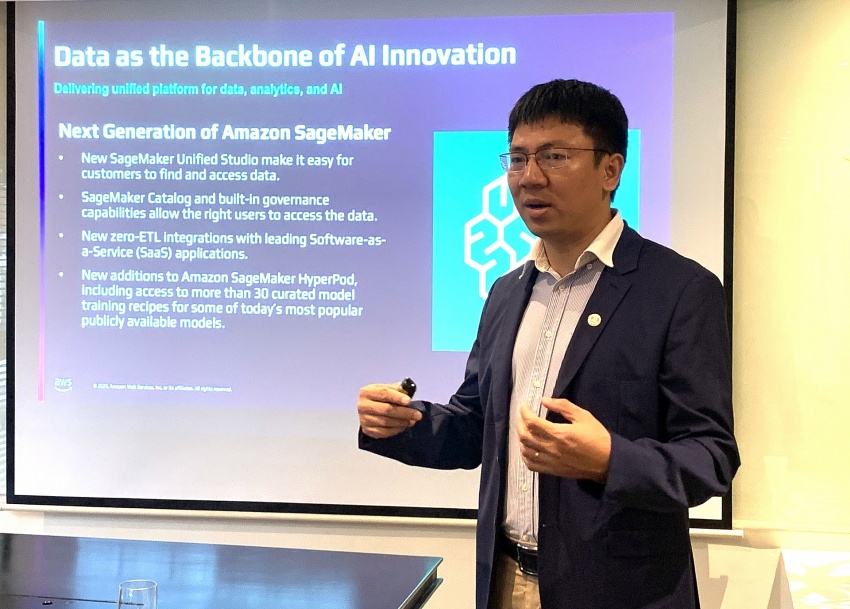 |
| Hoang Hieu, senior manager of solutions architect, AWS Vietnam. Photo: AWS |
“These are all part of our efforts and commitments to accompanying customers around the world as well as in Vietnam,” said Hoang Hieu, senior manager of solutions architect, AWS Vietnam. “According to forecasts, in the next one to three years, AWS will have a huge opportunity to support customers by using newer, better, faster, and more accurate tools to build and develop their applications in this AI era.”
Many businesses have had success with AWS. For example, AI Hay, a Vietnamese startup, reaches 33 million unique monthly views with 80 per cent user satisfaction.
Elsewhere, Vietnam International Bank’s ViePro, the first AWS-powered GenAI banking assistant in Vietnam, projects a 40 per cent boost in customer service productivity, 20 per cent client base growth, and significant operational cost optimisation.
“In the banking sector, successful banks like Techcombank, VPBank, VIB, and PvcomBank have started to innovate,” Hieu said, adding, “We are seeing the public sector pick up as well. In the next one to two years, those sectors will have more distinct changes in access to products.”
New capabilities
Fully aware of the next technological leaps in AI capabilities that will deliver next-generation infrastructure, make data the backbone of innovation, and change the future of work, AWS is introducing new tools and services to meet growing demand.
 |
| Image generated by Amazon Nova Canvas. Photo: AWS |
For instance, the US tech giant introduced Amazon Nova, with new state-of-the-art foundation models that deliver frontier intelligence and industry-leading price performance. Amazon Nova models will be available in Amazon Bedrock, and include Amazon Nova Micro, Amazon Nova Lite, Amazon Nova Pro, Amazon Nova Premier.
“All Amazon Nova models are fast, cost-effective and have been designed to be easy to use with a customer’s systems and data. Amazon Nova Micro, Amazon Nova Lite, and Amazon Nova Pro are at least 75 per cent less expensive than the best performing models in their respective intelligence classes in Amazon Bedrock. They are also the fastest models in their respective intelligence classes in Amazon Bedrock,” said Hoang Hieu.
AWS also strengthens Amazon Bedrock with an industry-first AI safeguard, agent orchestration capability, and advanced customisation option.
With the changing future of work, AWS has announced new capabilities for Amazon Q Developer, the most capable GenAI assistant for software development, that take the undifferentiated heavy-lifting out of complex and time-consuming application migration and modernisation projects, saving customers and partners time and money.
Amazon Q Business, Amazon Q in QuickSight, and generative AI-powered experiences in third-party applications, such as Asana and Zoom, can now work from the same canonical index of enterprise data. More than 50 new actions to automate tasks across applications are generally available now.
In next-generation infrastructure and silicon, AWS has announced the general availability of AWS Trainium2-powered Amazon EC2 instances, including introducing new Trn2 UltraServers, enabling customers to train and deploy today’s latest AI models as well as future large language models and foundation models with exceptional levels of performance and cost efficiency, and unveiled next-generation Trainium3 chips were in the pipeline.
 |
| Image generated by Amazon Nova Canvas. Photo: AWS |
The company has also announced new data centre components to support AI innovation and further improve energy efficiency. “Our latest data centre design improvements include simplified electrical distribution and mechanical systems that enable infrastructure availability of 99.9999 per cent. The simplified systems also reduce the potential number of racks that can be impacted by electrical issues by 89 per cent,” said Hieu. “As data is the backbone of AI innovation in the digital development era, we have unveiled the next generation of Amazon SageMaker, delivering a unified platform for data, analytics, and AI.”
According to Hieu, the new SageMaker Unified Studio makes it easy for customers to find and access data from across their organisation and bring together purpose-built AWS analytics, machine learning, and AI capabilities.
With SageMaker Catalog, administrators can define and implement consistent access policies using a single permission model with granular controls, while data workers from across teams can securely discover and access approved data and models enriched with business context metadata created by GenAI.
Meanwhile, SageMaker Lakehouse provides unified access to data stored in Amazon S3 data lakes, Redshift data warehouses, and federated data sources, reducing data silos and making it easy to query data, no matter how and where it is physically stored.
AWS also announced new Amazon SageMaker HyperPod capabilities, helping customers remove undifferentiated heavy lifting across the AI development lifecycle, saving weeks of model training time with flexible training plans, and maximise compute resource utilisation to reduce costs by up to 40 per cent.
The company enhanced capabilities for Amazon DynamoDB, Amazon Aurora, and Amazon S3 to support customers’ most demanding workloads. It announced new capabilities for Amazon Aurora and Amazon DynamoDB to support customers’ most demanding workloads that need to operate across multiple Regions with strong consistency, low latency, and the highest availability whether they want SQL or NoSQL.
Amazon Aurora is a cloud-native relational database that delivers all the performance and capability of a high-end commercial database, with the flexibility and cost-effectiveness of an open-source database.
AWS announced new Amazon S3 features that make S3 the first cloud object store with fully managed support for Apache Iceberg for faster analytics and the easiest way to store and manage tabular data at any scale.
You may like
-
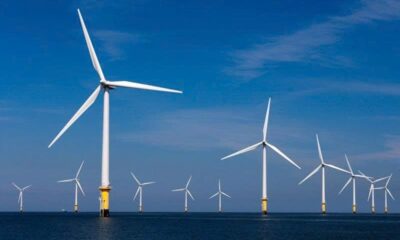

Vietnam’s Exclusive Economic Zone boasts over 1,000 GW of wind power potential: report
-
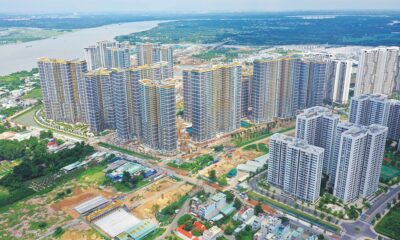

Uncertainty weighing on real estate
-
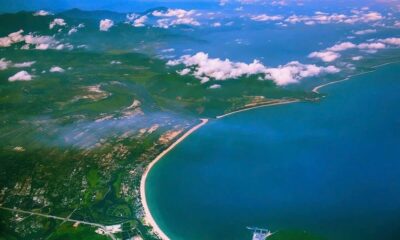

Central Vietnam city seeks $1.84 bln for 15 projects in economic zone
-
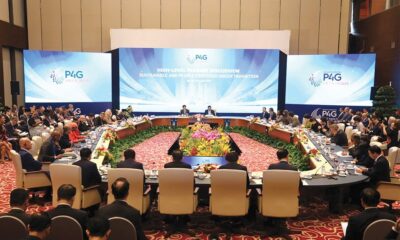

Green engagement rides high in Vietnam
-
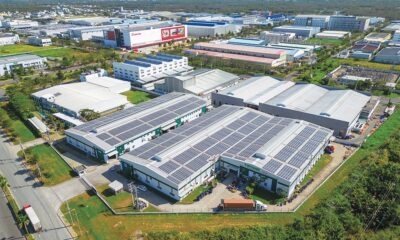

New standards being reached within green industrial parks
-
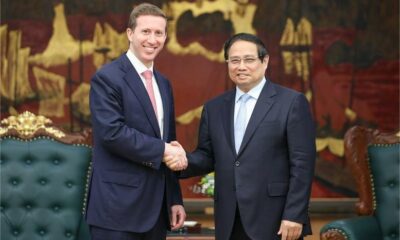

Vietnam PM asks Warburg Pincus to invest ‘further and faster’
Project
Vietnam’s Exclusive Economic Zone boasts over 1,000 GW of wind power potential: report
Published
9 months agoon
April 27, 2025Vietnam’s Exclusive Economic Zone (EEZ) has a wind power potential of 1,068 GW, nearly 470 GW more than previously estimated, according to a report released Friday by the National Center for Hydro-Meteorological Forecasting (NCHMF).
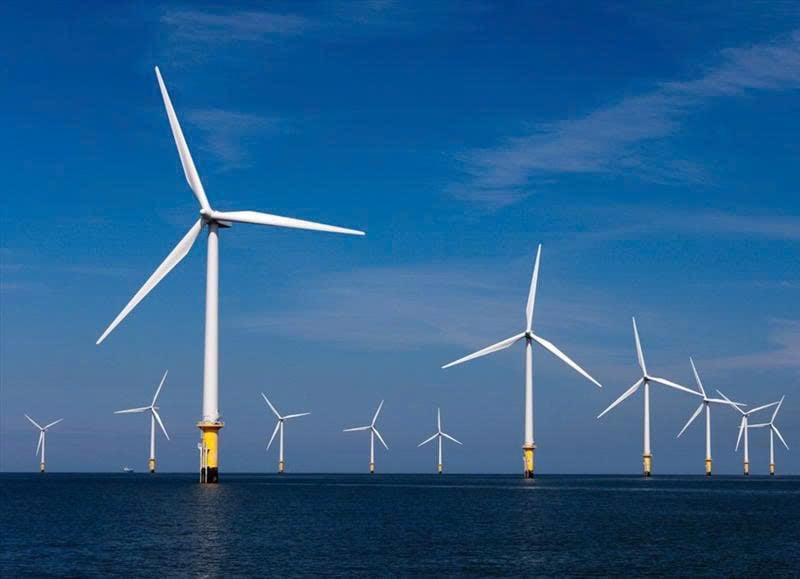
An offshore wind power project in Vietnam. Photo courtesy of VnEconomy.
The report, titled “Detailed Assessment of Wind Resource Potential in Coastal (up to 6 Nautical Miles) and Offshore Areas in Vietnam,” was conducted by the NCHMF with support from the United Nations Development Program (UNDP) and the Norwegian Embassy.
This wind potential was measured at a height of 100 meters above sea level, said Mai Van Khiem, director of the NCHMF. He noted that from November to February each year, wind capacity accounts for half of the annual total – peaking in December and gradually decreasing, with the lowest levels recorded in May.
The southern offshore areas account for 894 GW of this potential, while the northern areas contribute 174 GW.
In nearshore zones (up to 6 nautical miles), the total technical wind power potential is 57.8 GW. The Bac Lieu-Ca Mau region alone contributes nearly 30% of this, while the Ninh Thuan-Binh Thuan area accounts for 24 GW. Although the Quang Tri-Hue region has lower potential, it offers stable wind speeds during the winter months. The Red River Delta has a modest potential of 0.17 GW.
Compared to previous assessments, such as the World Bank’s 2021 study and data from the Global Wind Atlas (GWA), this report provides more detailed and higher-resolution information, both spatially and temporally.
“Notably, the EEZ potential outlined in this report exceeds the World Bank’s estimate by 469 GW, primarily due to the broader scope of the survey and more refined climate modeling using domestic observational data,” the research team explained.
They also emphasized the use of the Weather Research and Forecasting (WRF) model customized specifically for Vietnam, which enhanced the accuracy of the results.
The findings are based on wind data collected from 26 coastal and island meteorological stations, satellite sources from CCMP, ASCAT, and SCATSAT-1 (covering 30 years of ocean surface wind data), as well as buoy data from Nghe An province and seabed depth measurements.
A key innovation in this report is the integration of potential impacts from extreme weather events. Typhoons and tropical depressions occurring between August and October pose structural and safety risks to wind turbines. Meanwhile, strong winds and high waves during the northeast monsoon season can hinder access to and maintenance of offshore wind systems.
To support model calibration and long-term observation, the research team recommends increased investment in offshore wind monitoring stations at heights exceeding 100 meters. They also suggest incorporating these findings into offshore wind development strategies and national marine spatial planning.
Additionally, the team advocates for expanding research into other forms of marine renewable energy, such as wave, tidal, and ocean thermal energy.
“Vietnam has some of the most promising offshore wind resources in the region, creating a strong foundation for the development of a large-scale offshore wind industry. This will contribute to energy security, green economic growth, and the achievement of net zero commitments,” they said.
The study provides a vital scientific basis for policy planning, identifying priority development zones, attracting investment, building infrastructure, and training the future offshore wind workforce, the team added.
Hoang Duc Cuong, deputy director of the Department of Meteorology and Hydrology, emphasized that Vietnam lies within a strong and stable Asian monsoon belt, giving it abundant wind energy potential. He noted that this renewable source will play a key role in meeting the country’s climate change goals and advancing a low-carbon economy.
However, he also warned that marine-based natural disasters are highly complex and could significantly impact the stability of offshore wind operations and energy generation.
The ever-changing status of the global economy following last week’s tariff shocks continue to loom large among investors in Vietnam’s real estate market.
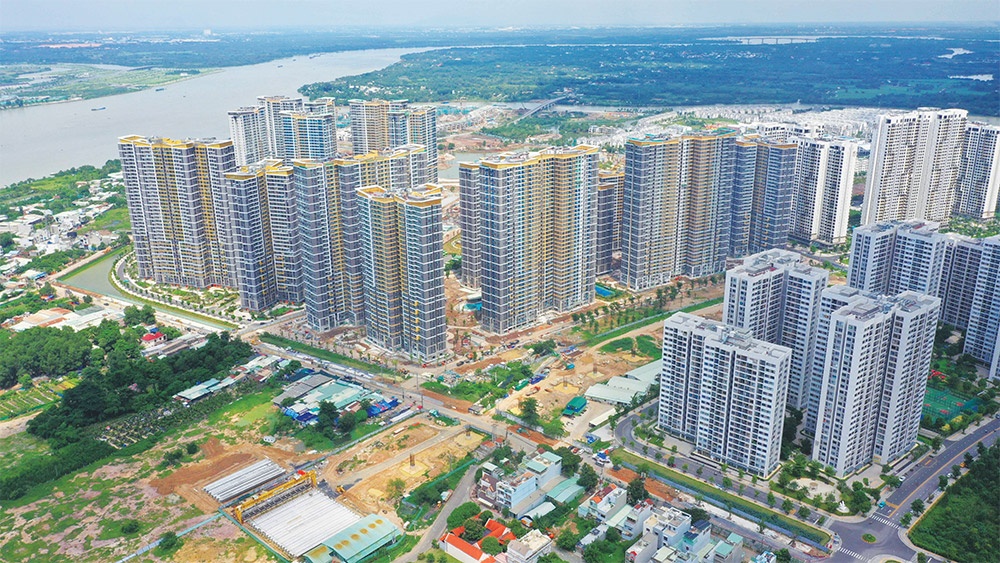 |
| All real estate segments are at risk of losing appeal if high global tariffs are eventually put in place, photo Le Toan |
Pham Lam, vice chairman of the Vietnam Real Estate Association, said that while it is premature to determine the full impact of new US import tariffs on Vietnam’s property market, early signs point to shaken investor sentiment and potential disruptions to foreign investment.
“If multinational corporations scale back or delay their factory expansion plans, the demand for land and factory leasing could decline, which may place downward pressure on industrial rents, lead to increased vacancy, and postpone new industrial zone developments,” he said. “This would affect key industrial property markets such as Bac Ninh, Bac Giang, Haiphong, Long An, and Binh Duong.”
Meanwhile, real estate expert Nguyen Hoang said that the United States remains one of the most critical export destinations for Vietnam’s foreign-invested enterprises.
“Any change in tariffs will significantly influence capital flows, investor confidence, and manufacturing strategies of companies operating in Vietnam. If a high tariff is fully implemented in 90 days, it could seriously diminish Vietnam’s investment appeal – affecting all real estate segments as a result,” Hoang said.
Vietnam’s property market has only recently emerged from a prolonged two-year downturn.
“It remains highly sensitive to economic and policy shocks. Investors have remained cautious, and any further external pressure could threaten to break the fragile liquidity recovery, potentially sending the market back into a period of short-term stagnation,” Hoang added.
Alex Crane, managing director of Knight Frank Vietnam, said that the recent tariff twists by the US casts a shadow of uncertainty, with potential implications for various segments of the market.
While manufacturing has shown resilience, it is still on the path to full recovery from the pandemic, particularly in labour-intensive sectors like garments and furniture. Tariffs imposed now would not have as severe an impact as they might have during Vietnam’s 2019 peak, but consequences are still expected, Crane said.
“I may expect that major transactions, especially those involving large capital outlays, are being paused or undergoing extended due diligence as investors and developers reassess assumptions and underwriting models and commercial occupiers are expected to defer large capital expenditures in the short term,” Crane said.
In addition, the response from the State Bank of Vietnam, particularly regarding monetary policy, will be crucial. While a rate cut may not effectively stimulate residential demand (as demonstrated in 2024), targeted lending for key industries and easing of loan-to-value ratios or debt-to-income limits for developers could provide relief.
“At present, most segments of the real estate market are in a holding pattern, awaiting clarity from the evolving negotiations between the Vietnamese and US governments. While uncertainty is unsettling, Vietnam’s underlying fundamentals remain sound, and the market’s long-term outlook is still viewed positively,” he added.
Nguyen Dung Minh, deputy CEO of MIK Group, has warned that under the new US tariff regime, many investors will be forced to reassess their strategies, likely leading to a decline in the demand for industrial land.
“Investors will need time to re-evaluate their actual demand and incoming orders and make necessary adjustments before they can fully gauge the extent of the impact,” Minh said.
He added that the implications go beyond just industrial land. “The new US tariffs are also expected to disrupt supply chains and negatively affect supporting sectors such as logistics, warehousing, and raw materials manufacturing. As production slows, so too will the demand for land associated with these services,” Minh said.
| Trang Bui, country head Cushman & Wakefield Vietnam
While the effects of tariffs are typically delayed, most economists warn that they may eventually fuel inflation and dampen economic growth. Many manufacturing firms could opt to postpone their expansion plans in the short term if export duties become too burdensome. There is also a possibility that some companies may look to diversify their supply chains towards a Vietnam+1 model, shifting parts of their operations to neighbouring countries. This could lead to a decline in demand for factories and warehouse leasing, two key drivers of the industrial real estate segment. However, it is important to recognise that industrial real estate is fundamentally a long-term investment. Vietnam has long positioned itself as the manufacturing hub of Southeast Asia, thanks to its strategic location and the “bamboo diplomacy” approach, which has enabled the country to swiftly join trade negotiations and sign multiple free trade agreements. Moreover, many manufacturers in Vietnam have already established tightly integrated supply chains. As such, their investment plans tend to operate on a much longer time horizon than the near-term effects of tariff policy. Relocating supply chains typically requires at least 3–5 years, making short-term shifts less likely. Overall, Vietnam’s industrial real estate sector has proven resilient under various political and economic conditions. Investors would do well to focus on long-term trends and structural advantages. Manufacturers, in particular, may take this opportunity to secure high-quality industrial assets, invest in automation, and pull in skilled labour, while continuing to monitor developments in upcoming trade negotiations with caution. Nguyen Thi Bich Ngoc, CEO, Sen Vang Group When it comes to the reciprocal tariff policy announced by the US, the greater danger currently lies not in the tariff itself, but in the heightened sense of uncertainty it has triggered across the Vietnamese market, a sentiment clearly reflected in recent VN-Index fluctuations. In the short term, the policy will weigh heavily on Vietnam’s industrial real estate sector. However, in the long run, this challenge could serve as a catalyst for stronger growth. It presents an opportunity for the government and industrial zone developers to rethink their strategies, offering more competitive, attractive solutions to both foreign and domestic investors. Rather than relying solely on external trends like the China+1 shift, Vietnam should leverage its inherent competitive advantages, including a strategic geographic location, a skilled and cost-effective labour force, and political stability, to pull in long-term investment. These are undeniable strengths that set Vietnam apart. Moreover, this is also an opportune moment for Vietnam to re-evaluate and restructure its key sectors, prioritising strategic industries with high growth potential. Continued engagement in bilateral and multilateral trade agreements will open up new opportunities and elevate Vietnam’s position both regionally and globally. Ultimately, we must seize this challenge as a turning point, transforming pressure into momentum for sustainable development. Vo Hong Thang, Investment director DKRA Group The industrial infrastructure, commercial, and residential real estate segments are all likely to face increasing headwinds if a huge tariff increase is eventually implemented. In recent years, a number of developers have made significant investments in industrial zones, betting on a continued influx of foreign direct investment. However, the new tariff policy raises the possibility of such flows being diverted to other countries. Vietnam now faces the risk of having built the nest, but being unable to attract the eagle. In addition, liquidity in both residential and commercial real estate, including retail, office, and hospitality, is likely to weaken in the short term due to more cautious investor sentiment, defensive capital flows, and reduced purchasing power from end-users. Niche investment segments such as serviced apartments, tourism-related accommodations, and foreign buyer housing could also see demand drop, particularly as the foreign expert and executive workforce, typically a key demand driver, scales back plans to live and work in Vietnam. |
Project
Central Vietnam city seeks $1.84 bln for 15 projects in economic zone
Published
9 months agoon
April 26, 2025Authorities of Hue city in central Vietnam have released a list of 15 projects in Chan May-Lang Co Economic Zone which will need VND47.5 trillion ($1.84 billion) in investment capital between 2025 and 2026.
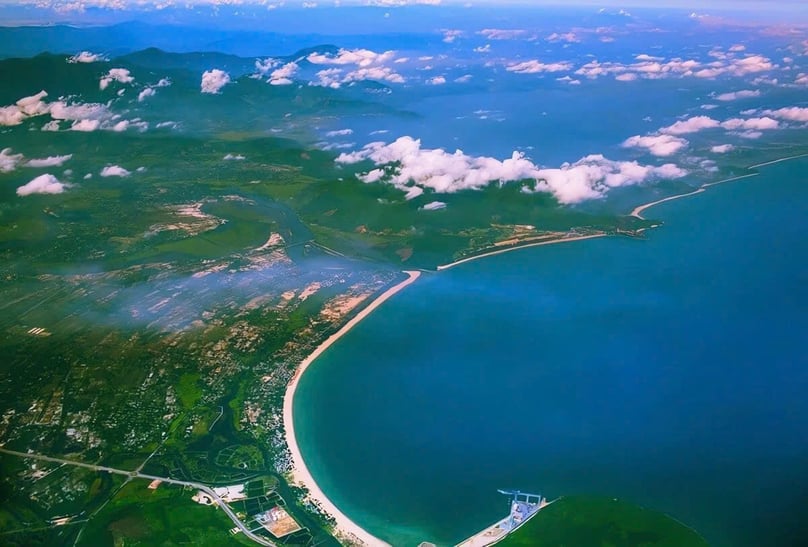
Chan May-Lang Co Economic Zone in Hue city, central Vietnam. Photo by The Investor/Dinh Duy.
Notable projects include the Chan May non-tariff zones No. 1 and 2 infrastructure development project, with a total area of over 503 hectares and combined investment capital of VND2.8 trillion ($108.23 million).
Another is the VND20 trillion ($773 million) Chan May Urban Area project (locations 1 and 2), which will cover 225 hectares and be implemented over five years.
The LNG terminal project at Chan May Port, 27 hectares with an investment of VND8.6 trillion ($332.43 million), is set for five-year implementation.
The 120-hectare Bai Ca eco-tourism project in Lang Co township will have investment capital of VND2.5 trillion.
The Lang Co beach resort, with an area of 45 hectares and total investment of VND4 trillion ($154.62 million), will be carried out over five years; while the 75-hectare Lap An lagoon tourism, urban development and resort complex in Lang Co township will cost VND6 trillion.
According to the management board of Hue Economic and Industrial Zones, since its establishment, Chan May-Lang Co Economic Zone has attracted 55 investment projects which remain valid, with total registered capital of VND97.32 trillion ($3.76 billion).
Among these, 15 are foreign-invested projects with combined capital of VND56.02 trillion ($2.17 billion), accounting for 57.56% of the total.
Several prominent foreign investors have established a presence in the zone, such as Banyan Tree Group (Singapore) with the Laguna Lang Co Resort and Winson Group (Taiwan) with the Billion Max Vietnam Export Processing Factory.
Chan May-Lang Co has become a destination for investments in sectors like tourism and resort development; seaport infrastructure; logistics; clean industry; and high-tech, environmentally friendly industries, with annual revenue reaching nearly VND4 trillion ($154.62 million) and tax contributions of around VND300 billion.
The management board said Hue city has proposed the Ministry of Construction review the adjustment of the EZ master plan through 2045, for submission to the Prime Minister.
The strategic goal is to develop Chan May-Lang Co into a key economic zone of central Vietnam – a coastal gateway offering logistics services for the central region and the East-West Economic Corridor, as well as a hub for high-end tourism services.
To attract investors, the local government will offer a range of incentives such as a 10% corporate income tax rate for 15 years from the first year the project generates revenue; import tax exemption for goods to create fixed assets for investment projects, and land and water surface rental exemptions, the board said.

Bac Giang International Logistics Centre launched

Vietnam’s Exclusive Economic Zone boasts over 1,000 GW of wind power potential: report

Uncertainty weighing on real estate

Central Vietnam city seeks $1.84 bln for 15 projects in economic zone

